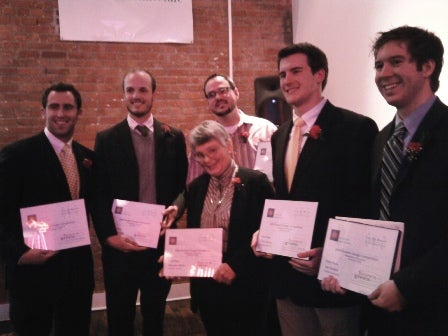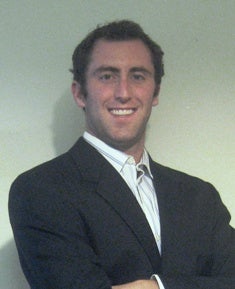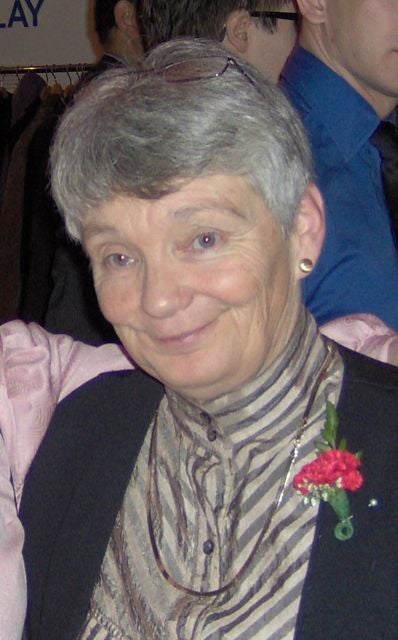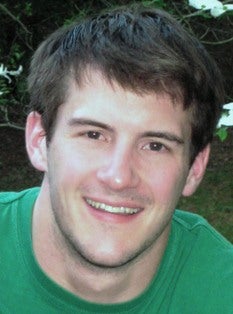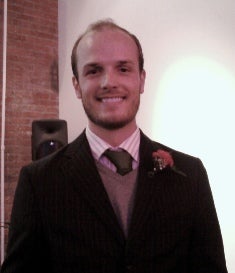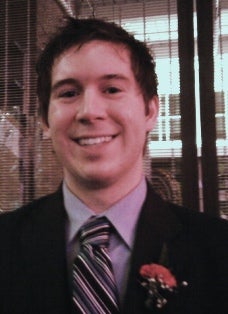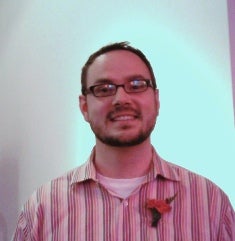Q&A with Ed Bacon competition winners
Dec. 8
PlanPhilly asked the members of the winning team to tell us a bit about themselves and their design. Here’s what they said:
Zac Boggs
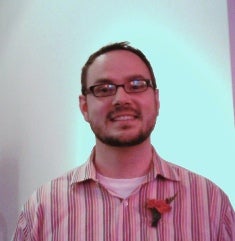
Age: 32
Hometown: Boulder, CO
Degree program: Master of Landscape Architecture
Undergrad degree: Colorado State University, BLA in Landscape Architecture
Relative work experience: Design Workshop Inc, Landscape Architecture Firm, 6 years
Maureen Bolton
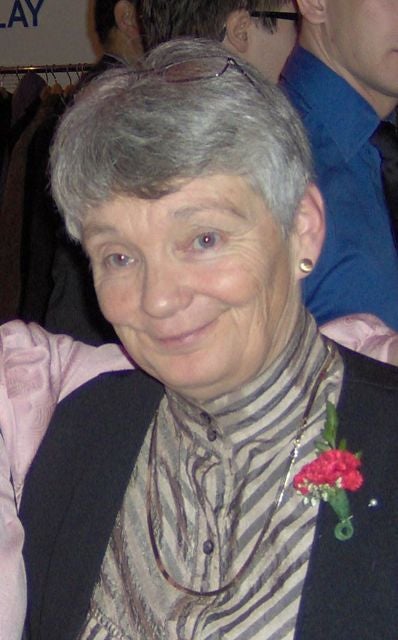
Age: 57
Hometown: Ithaca, NY for the past 15 years.
Degree program: Master of Landscape Architecture
Undergrad degree: Fine arts from Daemon College in Buffalo, NY.
Relative work experience: I have worked for years in the building trades and as a landscape laborer. My last position was in the arboretum at Cornell with the grounds crew.
Tyler Grooms
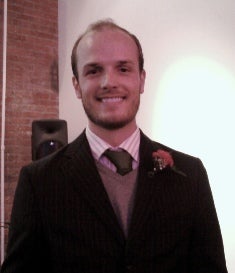
Age: 25
Hometown: San Diego, CA.
Degree program: MPS Real Estate
Previous degrees: MSBA, Finance, San Diego State, 2008; BA, Economics, Chapman University, 2007; BS, Business, Chapman University, 2007
Relevant work experience: Internship in asset management at a Seattle area company
Dan Kelleher
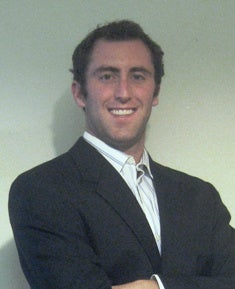
Age:23
Hometown: Delmar, NY
Degree program: Master of City and Regional Planning.
Undergrad degree: B.A. Environmental Planning and Management and Geography from SUNY Plattsburgh, 2008.
Relative work experience: Intern at Noble Environmental Power 2006-2007; Intern with Roger Trancik Urban Design Consultants LLC.
Chris Koenig
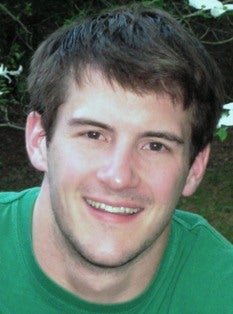
Age: 24
Hometown: Saratoga Springs, NY
Degree program: Master of City and Regional Planning
Previous degrees: BA Geography, Keene State College, Keene, NH
Relevant work experience: For this project: internship summer 2009 with the Vermont Department of Environmental Conservation building a statewide brownfield legacy database for historical dry cleaners and manufactured gas plants.
Lee M. Pouliot
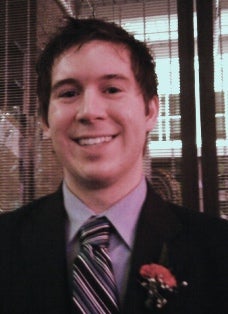
Age:24
Hometown: Chicopee, MA
Degree program: Master of Landscape Architecture
Undergrad degree: BS in Ornamental Horticulture, specializing in Environmental Design, from Delaware Valley College in Doylestown, PA in 2007
Relative work experience: Past studio projects including brownfield projects in Buffalo, NY (the Outer Harbor) and Bethlehem, PA (former site of Bethlehem Steel)
1. What was the most challenging aspect of the Grays Ferry Crescent project and why?
Boggs: The most challenging aspects of the Grays Crescent were remediation of site and connectivity to the community. The site had a long legacy of industrial activity and became very contaminated over the years. Our team thought the site should be inhabited in the future, so a large part of our concept was how to mediate the site for future development. We thought the contaminants should not be displaced, so we utilized a method to keep the remediation and extracted material on site.
As far as connectivity, the arterial intersection, high flow rail line and highway overpass has created a huge disconnect between the community and site and the site has created a disconnection from the community to the river. Our proposal focused on reconnecting the greater community to employment, mixed use, museum and the river park.
Bolton: The most challenging aspect of the Grays Crescent was making connections past all the highways and infrastructure.
Grooms: Since I focused on the financing and market study, the most challenging part was figuring out the right uses for the site to deliver satisfactory financial returns while accounting for a lot of non-revenue producing costs such as site remediation, public transportation concessions, and public spaces (museums, amphitheater, street trees, etc.). Because the site was so contaminated and we pushed the envelope on public spaces within the community, the financial strains were significant. Furthermore, we needed to find a mix that fit the massing of the surrounding community and didn’t feel like a single use subdivision (i.e. office park or condominium only development). With some market research and great intuition from the designers, our product mix provided ample returns as well as financing for a variety of amenities for the community.
Kelleher: The most challenging aspect of the Grays Crescent project from a competition standpoint was the current conditions of the site.
Koenig: The most challenging aspect was finding a strategy to remediate the soil that is sensitive to the surrounding residential neighborhoods. This is one of the reasons we chose tented on-site remediation so not to have to truck out tons of soil to be treated off-site.
Pouliot: I believe there were two major challenges that our team thought about throughout the project. The first issue was how to remediate a site that has such a long history of industrial character and pollution. In many projects, contaminated soil is typically removed from the site and replaced with clean fill that is brought in from elsewhere. We, in thinking about sustainability, felt that the energy and resources needed for such work did not fit the bill of “Brown to Green” and worked to find ways of dealing with remediation on site – which would also make the process visible and help speak to the complete ‘legacy’ of the site (both the positive and negative aspects.) Also, it was hard to consider that to typically remediate the site we would ultimately pollute another area if we were to remove contaminated soil – which seemed contradictory to our ultimate goal of being green and sustainable.
The second challenge included the differences in character of the surrounding neighborhoods. We knew we wanted to draw in elements from areas adjacent to the site as well as across the river – allowing the site to serve a wide variety of uses. Our general analysis revealed how different each area is and made site programming a constantly evolving element through our process.
2. It’s clear from your design that you really wanted to highlight the industrial past of the area, even while cleaning up its aftermath. Why was this important?
Boggs: We had many discussions about what components of the heritage should remain intact. The result was, due to remediation, the site would have to be cleared and the buildings and framework would not remain. We preserved one existing brick building on the perimeter and proposed an industrial heritage museum to focus on the industrial past of the site. We also proposed a historical timeline using interactive stations along the ‘spine’ which extended from current day redevelopment all the way to natural history along the river park.
Bolton: The history of any place is important, the people who have lived and worked there for perhaps generations want to see the past acknowledged while the area is brought into a new phase. Going in and wiping the slate clean, so to speak, is just another form of destruction. The past needs to be celebrated while the damage is being remediated.
Grooms: Preserving the industrial heritage of the site was a nod to the idea that we can change for the better but keep the industrial spirit of what made America what it is today. We shouldn’t be afraid of change, but we shouldn’t forget where we came from.
Kelleher: Our team was really unsure about the ability to reuse the Dupont Crescent site (due to the contaminated conditions) and thus we struggled with what we could build on it. Eventually, Chris Koenig and Maureen Bolton found and developed a progressive remediation strategy that would allow us to remediate the soil on site in stages, so that construction could ensue while clean-up was going on. I think our plan really builds on the competition’s theme of “brown to green”.
Koenig: With brownfields and industrial sites, there is often an emotional attachment between the site and residents of the community in which it exists. If we were to completely abandon the industrial heritage of this particular site, we would effectively be ignoring over 140 years of history and neighborhoods being built around the industry. Everyone has a story; whether their uncle worked there for 40 years or they were glad to see the factories shut down, people are as much as a part of the equation as the city building. If this were more than an exercise, there would be an enormous community stakeholder and charrette effort to allow the people who built this neighborhood to have a say in its [their] future. That’s just good planning.
Pouliot: We thought a great deal about the creation of sustainable green industries and jobs. In looking at the larger region, we found that a great deal of land along the river is industrial, many (parcels are) considered brownfields, some maybe abandoned, etc. In keeping the industrial past evident in the regeneration of the site, our hope was that the process could then spread out and begin to re-generate other post-industrial sites. Basically, we tried to answer the question of how this site could affect other sites of similar character – so that a process of re-generation could begin at Grays Crescent and then continue on to other sites.
3. Other than the environmental remediation – which would have to be done for development to take place – what elements of the plan are the most crucial, and why?
Boggs: Providing a mix of uses to activate the site all times of the day, week and year. Connecting to Greater Philadelphia via the ‘spine’ and riverfront trail to create a safe and assessable environment for the future.
Bolton: Past the remediation, the most difficult part of any development is getting the right mix of residential, jobs and retail to activate an area and keep the momentum going.
Grooms: The phasing strategy we chose is a little backward from normal intuition, but we strongly believe that bringing the new generation of employment to Grays Crescent is essential for a variety of reasons:
a. The lab and corporate facilities will employ people from all socioeconomic classes, from the Ph.D. researcher to the low level technician to the experienced CEO.
b. Once these groups have been integrated in the work environment, hopefully they will be open to staying after work and enjoying some of the civic and retail features of the center. These features are also lacking in the surrounding communities and we feel this will draw people in and make these communities more familiar with the project.
c. What is usually a first step in a mixed use development, the housing comes last in our plan because we feel that to get the mix of people we are targeting to the site, we will have to slowly merge the groups together.
Kelleher: Waterfronts historically have provided the employment base for the surrounding communities. We felt that our project should continue this historic trend by bringing new, green-collared jobs to the site without forgetting the site’s blue-collared roots. The Dupont presence in Philadelphia was a major economic driver for over a century and we felt our design would help continue that legacy.
Koenig: I think the stilted environmental education center in Heritage Park is immensely important and it pretty much embodies the definition of sustainable development with its concept. The lesson is, the development IS and SHOULD BE constrained by environmental conditions. In other words, breaking out of the 1950’s development paradigm that is a ‘bigger is better and we can do anything with technology.’ The education center illustrates this point with two central features. 1) The building is stilted as to respect the 100-year flood plain in a park that accommodates seasonal flooding. 2) We used a risk-based corrective action strategy which means not cleaning up ALL of the contamination but installing engineering controls to monitor and track and mitigate any remaining contamination. The center explains this process in detail so the people who use the site to live on or work on will be aware of exactly what was there and what still may be there. Further, end land uses are placed in relation to the level of contamination and amount of remediation. This is opposed to saying that we will spend 15 billion to remediate all the soil, which is unreasonable.
Pouliot: Personally, I think the most important part of the plan is job creation and green industry. Industry may have created the brownfield we had to work with, however, it also has the power to re-generate. Often, we see industry as the foe of natural processes. However, we took the opportunity to re-define industry as one that could re-generate and attempt to mimic processes that once existed.
In allowing for industry to change character, the workforce could also then be re-trained in more sustainable, green practices and this would translate to long lasting jobs that would benefit local residents and support further site re-generation in the area. It is one thing to ‘design’ a sustainable, green project, it is another thing to get people invested in the process of regeneration so that an overall shift in how we live can occur.
4. What is the element of the design that you are most proud of, or that is your favorite, and why?
Boggs: I believe the river front park is a special place. The dual use incorporating stormwater cleansing, amphitheater and environmental learning center provides social interaction and environmental sustainability.
Bolton: I found the company in Germany that did the on-site remediation and that was my proudest feat, although I did the history line with the green to brown back to green theme … I was proud of that, too.
Grooms: The most exciting part about this development is that it is truly mixed use and could be self dependent. It is possible for people to live, shop and work on site. Furthermore, even if one didn’t live, shop or work on site, they are connected to many surrounding communities via public transportation and off street paths, thus reducing the need for cars.
The second most exciting part of the plan is the lab and office environment. With labs on the first floors and office on the top floors of the towers, a company can have a completely vertically integrated environment with research and development downstairs and corporate operations upstairs. Furthermore, with conference and hotel space nearby, access to The University of Pennsylvania across the river, and restaurants and public space within the development, office workers need will spend less time in transit between tasks and will enjoy being at work. This idea explores how real estate can be a value-add asset for companies, where companies in Grays Crescent could see productivity increases from workers because of the aforementioned benefits.
Kelleher: I think my favorite part of our plan is that it provides access and strong connections to the waterfront for the associated neighborhoods; our team really didn’t want the Crescent to become another elite waterfront enclave.
I think I also enjoy this project because it capitalizes on the renewed energy that is beginning to pulse through our older cities. Being from Albany, it is truly great to see organizations like the Ed Bacon Foundation using competitions to stimulate new visions that will revitalize our Rustbelt cities.
Koenig: Playing off the shape of the unique bend in the river to make an interesting design with different bends and arched gestures.
Pouliot: I love our concepts for the Industrial Museum and the Environmental Education Center. Both allow for the ‘curation’ of major characteristics of the site, allowing the industrial past to live on into the future and for the education of visitors and residents alike as to the long history and numerous uses this site served.
The Environmental Education Center teaches how natural processes can be integrated into our most dense urban centers, becoming valuable multi-functional elements that co-exist with the built. Together these two centers speak to the past and the future – and what that could look like anywhere a brownfield or industrial site is to be re-generated.
Also, I’m really happy with the fact that we focused on industry and jobs. Job creation seems really important as our country struggles through the recession and the fact that we were able to respond to that in this design speaks to our concerns of staying relevant to macro-scale conditions and dealing with them in a site-specific manner.
WHYY is your source for fact-based, in-depth journalism and information. As a nonprofit organization, we rely on financial support from readers like you. Please give today.



